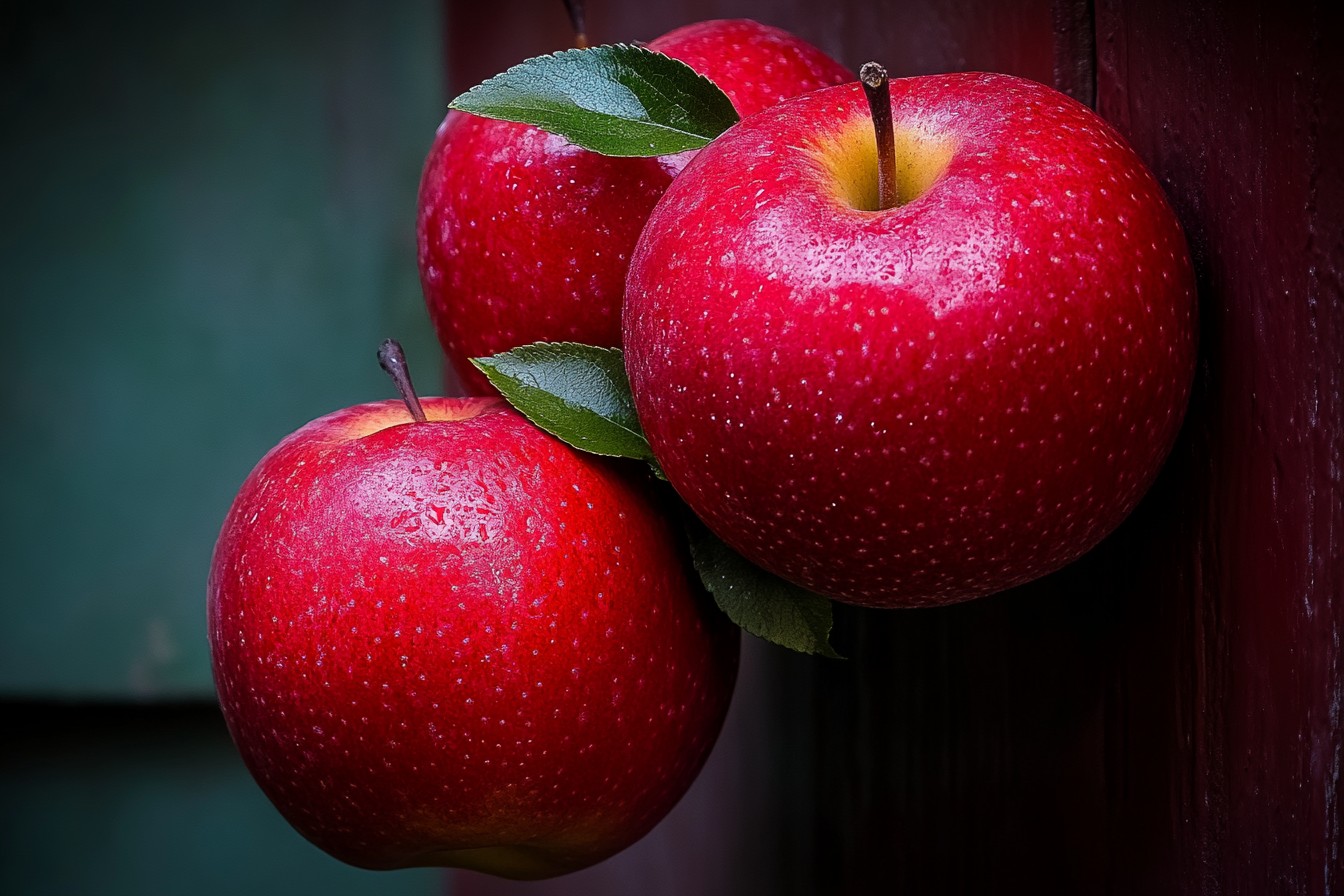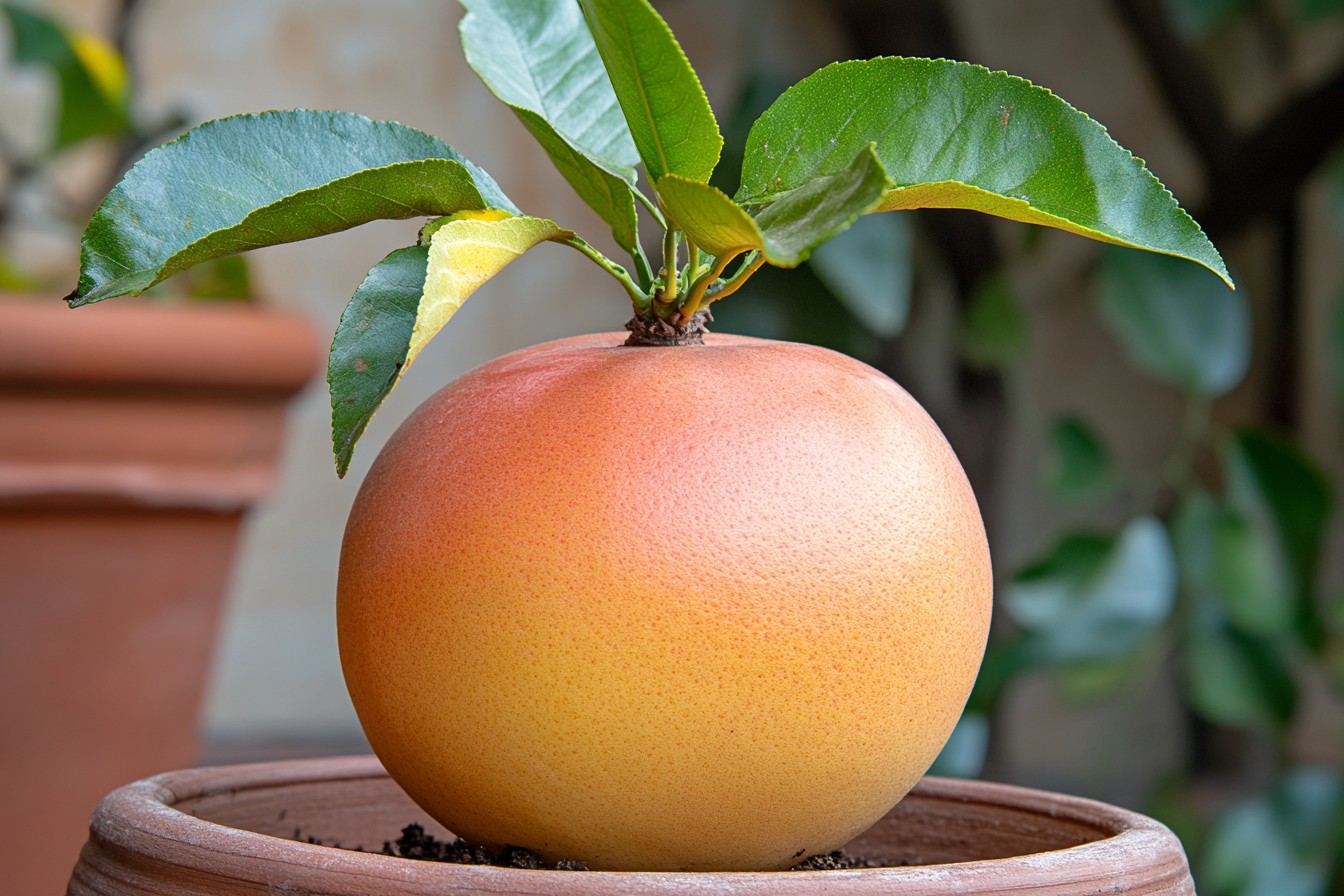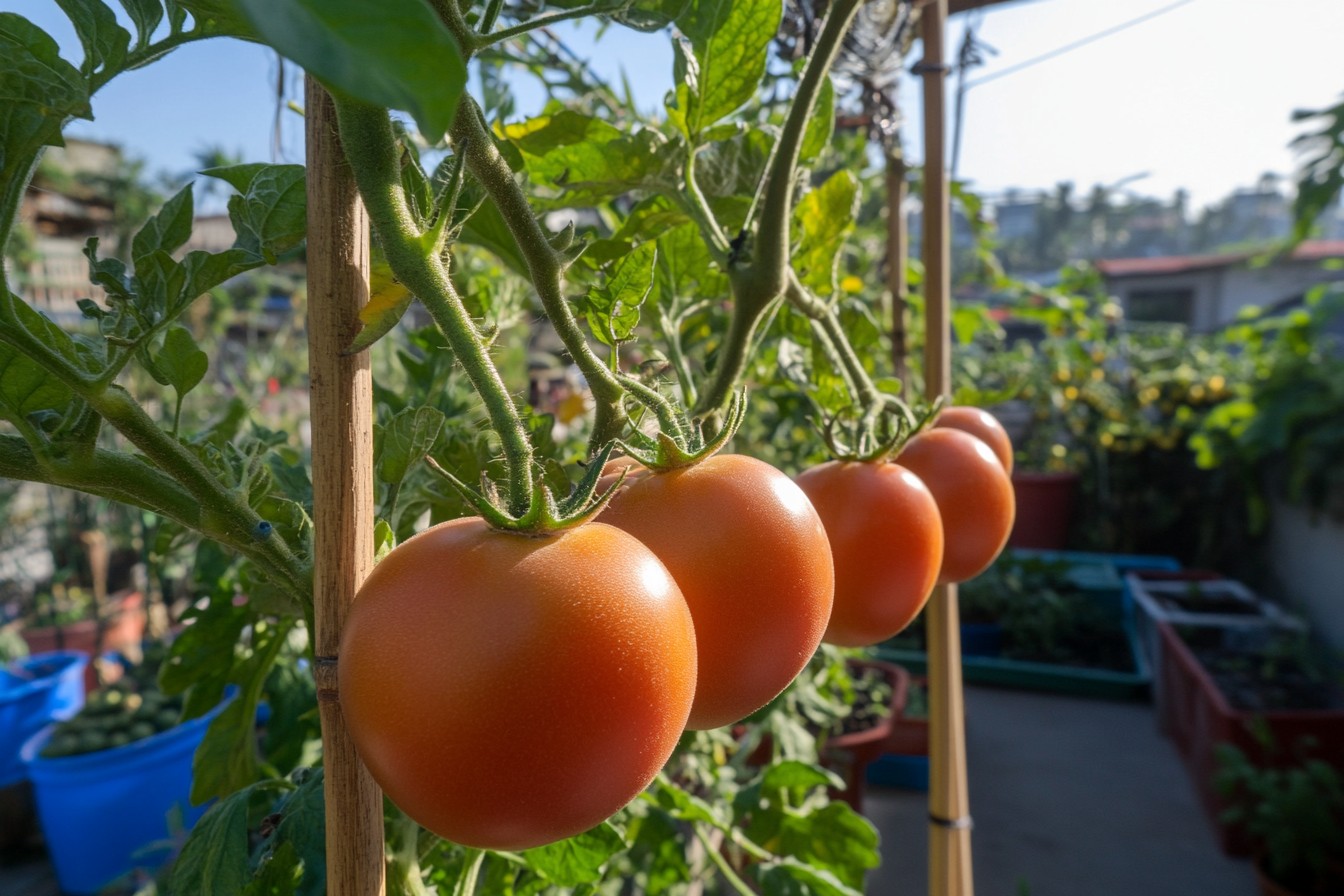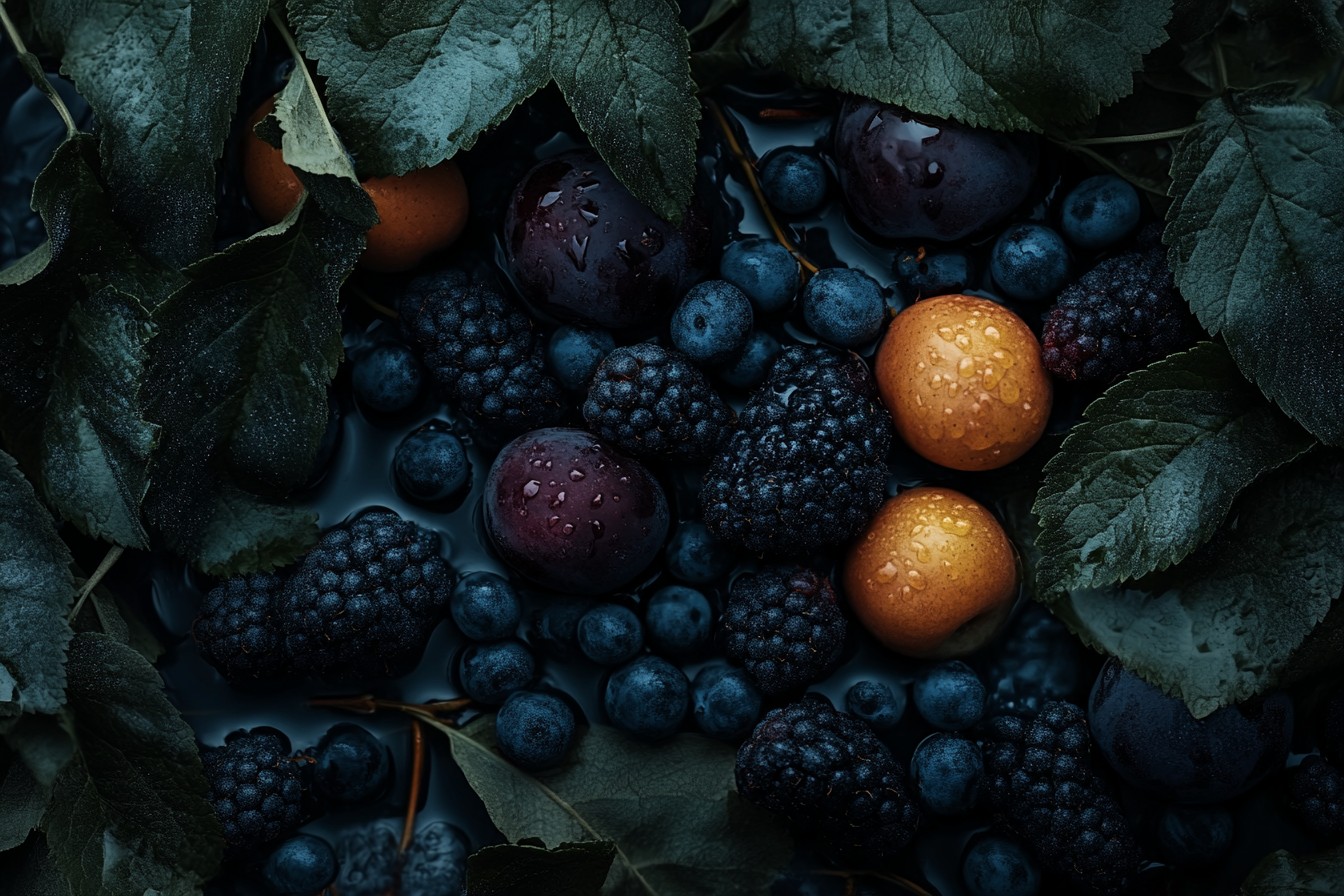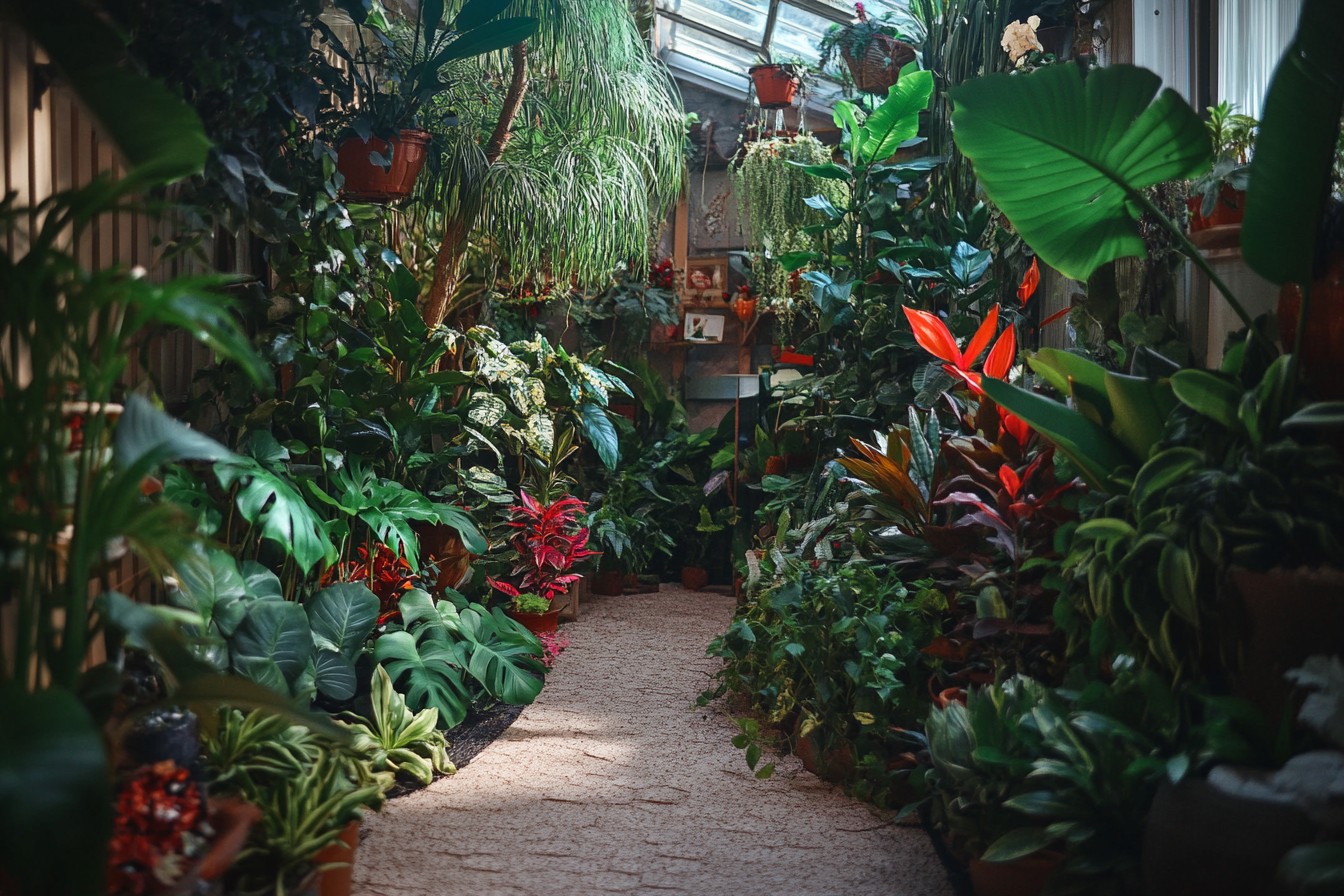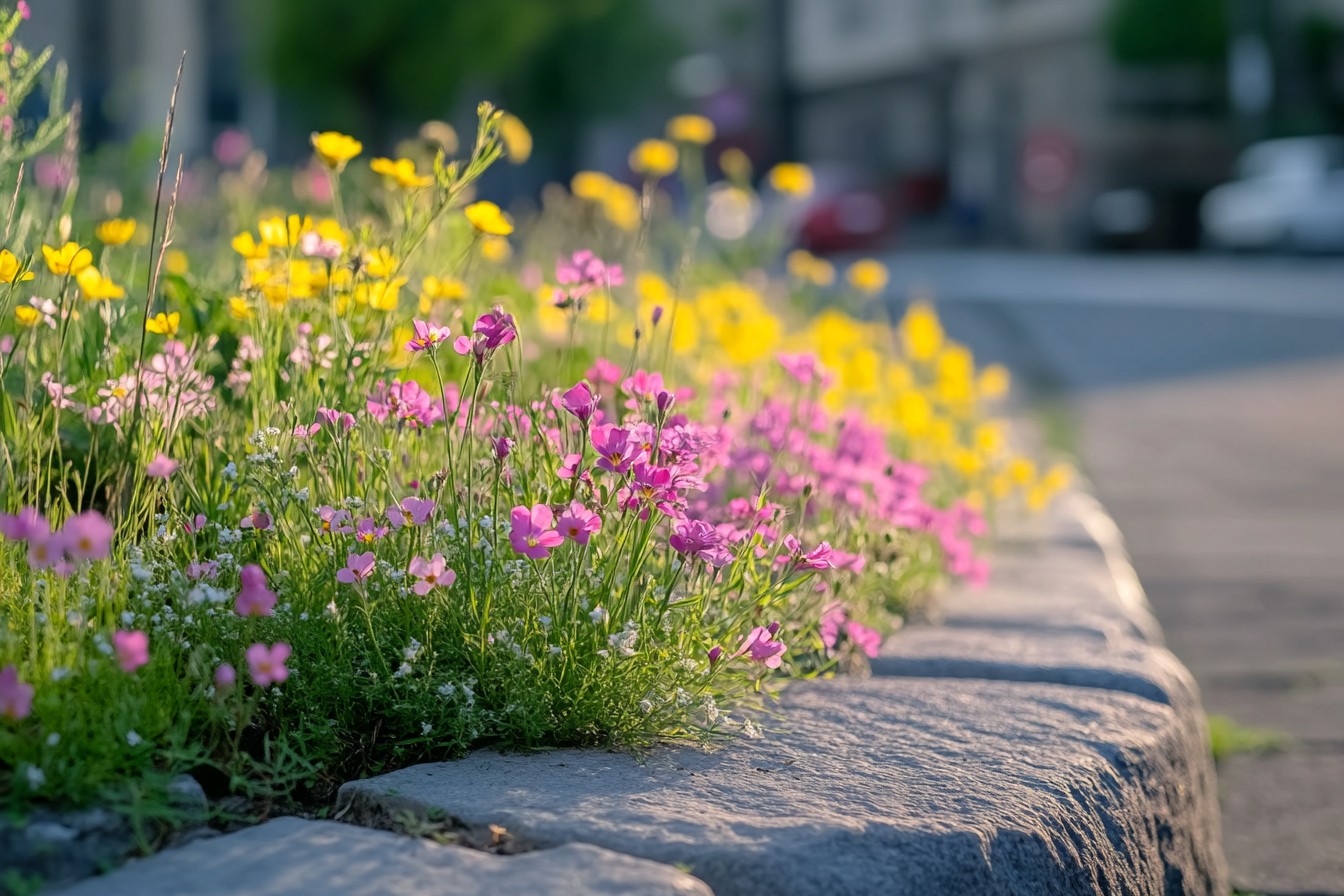The day I realized I had a fruit problem was when my upstairs neighbor Judy spotted me dragging a 65-gallon fabric pot up the back stairs and simply said, “Honey, this isn’t normal.” She wasn’t wrong. Most Chicago apartment dwellers aren’t wrestling massive dirt-filled containers through narrow hallways at 7 AM on a Saturday. But I had read about this specific dwarf cherry variety that was supposedly perfect for containers, and the nursery was having a sale, and well…
here we were. My gardening addiction had graduated from herbs and vegetables to actual trees, and there was no going back. “It’s going to produce fruit,” I explained, as if that justified the soil now decorating our shared stairwell.
Judy just shook her head and held the door open, which I choose to interpret as tacit approval of my increasingly deranged urban gardening experiments. The cherry tree incident marked year three of my quest to grow fruit in a space that has no business growing fruit—a north-facing Chicago apartment with approximately 120 square feet of actual outdoor space (a rickety back porch and a 4×20-foot strip alongside the building) plus about 80 square feet of borrowed space in the building’s communal backyard. The dream started innocently enough with strawberries in a window box and rapidly escalated to what my roommate Dave now calls “the urban orchard situation.”
When people ask why I’m trying to grow fruit in such an inhospitable setting, I usually make jokes about apocalypse preparation or inflated grocery prices.
The truth is both simpler and more embarrassing: I got tired of watching squirrels eat all the good stuff from the mulberry tree in the yard next door. There’s something uniquely infuriating about watching rodents feast on fresh fruit while you pay $6 for mediocre supermarket berries. “I can do that,” I thought, watching a particularly fat squirrel gorge itself on mulberries.
“How hard can it be?”
Turns out, pretty challenging but not impossible. After four years of failures, partial successes, and a few genuine victories, I’ve developed a system that produces a surprising amount of fruit from my limited urban space. Here’s what worked, what failed spectacularly, and what might actually be worth trying if you, too, are irritated by squirrels living their best lives at your expense.
Let’s start with the most successful: strawberries, which have consistently been the highest yielding fruit for the space they occupy. After experimenting with various setups, the clear winner has been vertical strawberry towers—basically tall cylindrical planters with pockets or openings along the sides where plants grow outward. These maximize the number of plants per square foot of floor space and offer decent protection from both ground pests and rain splash.
My current tower design uses 8-inch diameter PVC pipe with 3-inch holes drilled in staggered rows, filled with a mixture of potting soil, compost, and perlite for good drainage. Each tower holds 18-20 plants while taking up less than one square foot of floor space, and can be easily moved to follow sun patterns or brought inside during extreme weather. Variety selection proved crucial for consistent production.
After testing eight different types, ‘Ozark Beauty’ and ‘Seascape’ have been the clear winners for my conditions. Both are day-neutral varieties that produce continuously rather than in one big flush, extending the harvest season from late May through October. From four towers (approximately 80 plants total), I harvested just over 15 pounds of strawberries last season—enough for fresh eating throughout summer with some leftover for freezing.
Not enough to quit my day job as a strawberry farmer, but certainly enough to justify the space they occupy. The irrigation system evolved through several increasingly complex iterations before I settled on a simple solution: a small reservoir at the top of each tower with a recycled IV drip line running down through the center of the pipe, with small holes at each plant level. This provides consistent moisture without the soggy conditions that lead to rot—a crucial factor for strawberries planted vertically where water naturally wants to pool at the bottom.
Pest management has been an ongoing battle. Birds, particularly robins, view my strawberry towers as convenient all-you-can-eat buffets. After trying various deterrents (shiny objects, fake owls, pleading), the only consistently effective solution has been lightweight netting draped over the towers once berries begin to form.
Similarly, slug protection is non-negotiable—a copper tape barrier around the base of each tower has dramatically reduced losses, though I still occasionally find the slimy bandits making death-defying climbs up the vertical surface in pursuit of berries. Moving up in size, blueberries have been my second most successful fruit crop, though they required significant soil modification. Chicago’s naturally alkaline soil is basically poison for acid-loving blueberries, so container growing was the only viable option.
I use 20-gallon fabric pots, which provide adequate root space while allowing excess moisture to evaporate through the sides—critical for preventing root rot during our rainy springs. The growing medium is a custom acid-lovers mix: equal parts peat moss, pine bark, and perlite, with elemental sulfur added to lower pH. Even with this specialized soil, maintaining proper pH requires regular monitoring and occasional adjustments with sulfur or acidifying fertilizers.
It’s admittedly high-maintenance, but the results have been worth the effort. For varieties, I’ve had the best success with half-high blueberry types that combine the cold hardiness of lowbush with the larger fruit size of highbush varieties. ‘Northblue’ and ‘Northland’ have been particularly productive in my Zone 5b conditions.
They’re compact enough for containers but robust enough to produce meaningful harvests. Speaking of harvests—this is where expectations need careful management. Commercial blueberry producers measure yield in pounds per plant.
I measure mine in handfuls. Each of my four container plants produces approximately 1-2 pints of berries annually, or about 3-4 pounds total across all plants. Not exactly a commercial operation, but there’s something magical about walking outside on a summer morning and harvesting just enough blueberries for your breakfast.
The flavor difference between truly ripe, just-picked berries and store-bought ones is dramatic enough to justify the effort. Pollination proved unexpectedly challenging for blueberries in my urban setting. While they’re partially self-fertile, fruit set significantly improved after I added different varieties to encourage cross-pollination.
Even then, results were inconsistent until I placed native bee houses near the plants and intentionally added flowering companions that attract pollinators. This created a more reliable pollinator presence during the critical flowering window. Now for the mid-sized fruit trees, where results have been mixed but increasingly promising.
Dwarf cherries, despite Judy’s skepticism about my container-dragging antics, have been surprisingly successful. The key was selecting the right variety—a true genetic dwarf rather than a standard tree grafted onto dwarfing rootstock. My ‘Romeo’ dwarf sour cherry, now in its third year, stands about 4 feet tall in its massive container but produced nearly 7 pounds of cherries last season.
The self-fertile nature of sour cherries eliminated the pollination challenges that plague many urban fruit growers, and their natural disease resistance meant fewer sprays and interventions. The compact form requires minimal pruning beyond removing crossing branches and maintaining an open center for airflow. Container management has been the biggest challenge with dwarf trees.
That 65-gallon fabric pot contains a carefully engineered growing medium (loamy topsoil, compost, and pine bark, with a layer of gravel at the bottom for drainage), and still requires careful watering to prevent drought stress during summer. The weight—over 300 pounds when fully wet—means it’s essentially an immovable installation that required careful initial placement to maximize sun exposure. Winter protection proved necessary even for these cold-hardy varieties.
Chicago’s freeze-thaw cycles are particularly hard on containerized plants, where roots are more exposed to temperature fluctuations than their in-ground counterparts. I wrap the containers with bubble wrap insulation and mulch heavily around the base. During polar vortex events (an increasingly common Chicago winter feature), I’ve even been known to bring trees into the building stairwell temporarily, much to the amusement of my neighbors.
Sweet cherries, by contrast, have been my most spectacular failure. Despite selecting varieties supposedly suited for urban growing (‘Compact Stella’ and ‘BlackGold’), they’ve struggled with inadequate winter chill hours, spring frost damage to blossoms, and relentless bird pressure on the few fruits that do develop. After three years of producing fewer cherries than I can count on one hand, I’ve reluctantly retired them from my lineup.
Apples have been a qualified success, with important caveats. The first lesson—painfully learned—is that those adorable columnar apple trees marketed to urban gardeners are a trap. Yes, they stay narrow, but their yield is minimal and their disease susceptibility is maximal.
After watching one succumb to fireblight and another produce beautiful but inedible scabby fruit, I replaced them with true dwarf varieties grafted onto M27 rootstock (the most dwarfing commonly available). My current star performer is a ‘Liberty’ apple on ultra-dwarfing rootstock, grown in a 30-gallon container using a modified central leader training system. At four years old, it stands about 5 feet tall with a 3-foot spread—small enough for my limited space but large enough to produce about 15 pounds of apples annually.
The disease-resistant nature of ‘Liberty’ has been crucial, as fungal pressure is high in Chicago’s humid summers, and my neighbors would likely object to the commercial spray regimen that conventional varieties require. Pollination presented another urban growing challenge for apples. Most varieties need cross-pollination from a different apple variety that blooms at the same time.
My solution was to graft a pollinator branch of ‘Honeycrisp’ onto my ‘Liberty’ tree—essentially creating a two-variety tree in the space of one. This technique, while requiring some specialized knowledge and tools, has dramatically improved fruit set while maintaining a small footprint. For growers with extremely limited space, espalier training against a wall or fence offers another solution.
My espaliered ‘Dorsett Golden’ apple occupies just 8 inches of floor space while spreading about 6 feet along the building wall. The horizontal branches produce more fruit per inch than conventional training methods, though total yield remains modest—about 8-10 pounds annually from my four-year-old specimen. The aesthetic value of the geometric form adds visual interest to an otherwise blank wall, effectively doubling as both food production and architectural element.
The most surprising success story has been container-grown figs, which seem almost laughably inappropriate for Chicago’s climate. Yet my ‘Chicago Hardy’ fig, grown in a 25-gallon container that overwinters in my unheated stairwell, reliably produces two crops annually—a small early crop on previous year’s wood in June, and a larger main crop on new growth in September. Last year’s combined harvest was just over 9 pounds of fresh figs, which at specialty market prices of $2-3 per fig represents a decent return on investment.
The key to fig success in northern climates is understanding their unique growth habits and winter protection needs. Unlike most fruit trees, figs can produce without pollination (the wasps associated with commercial fig production aren’t necessary for common home varieties). This makes them ideal for isolated urban settings.
They also respond well to radical pruning, allowing them to be maintained at 5-6 feet tall while remaining productive. Winter protection is non-negotiable for container figs in Chicago. My system involves moving the container to an unheated but enclosed space (stairwell, garage, or basement) where temperatures stay between 25-40°F throughout winter.
The tree loses its leaves and goes dormant, requiring only occasional light watering every 3-4 weeks until spring. For those without accessible indoor space, wrapping the entire container and tree in several layers of bubble wrap, burlap, and plastic can create enough insulation for survival in protected areas of a yard. Among small fruits, alpine strawberries and currants have earned permanent places in my garden.
Alpine strawberries—the tiny, intensely flavored cousins of conventional strawberries—thrive in partial shade, making them perfect for less-than-ideal urban sun conditions. While the fruits are too small for commercial production (roughly the size of a thumbnail), their continuous production from June through October provides regular harvestable quantities for garnishing desserts or adding to morning yogurt. Six plants tucked into container corners and underplanting larger specimens yielded about 2 cups of berries over the season—not a major harvest, but a delightful bonus from otherwise unused space.
Currants have been another shade-tolerant success. Red currants in particular have thrived in an area that receives only 4-5 hours of direct sun daily. Two ‘Red Lake’ bushes, each occupying about four square feet of ground space, produced nearly 6 pounds of fruit last season with minimal care beyond basic watering and annual pruning.
Their natural disease resistance and cold hardiness make them particularly well-suited to urban conditions where consistent care might be challenging. Now for the failures, which have been educational if occasionally heartbreaking. Peaches, despite their self-fertile nature and the availability of container-friendly varieties, have consistently underperformed.
Late spring frosts typically kill most of the blossoms, and the few fruits that do develop are magnets for every pest in the neighborhood. After three years of intensive care yielding a lifetime total of seven actual peaches, I’ve reluctantly concluded they’re not worth the prime container real estate in my limited space. Raspberries present a different challenge.
They grow productively enough—my four ‘Heritage’ raspberry plants in a dedicated 2×4-foot raised bed produced about 6 pounds of berries last season. The problem is containment. Even with aggressive barrier installation (metal sheeting buried 18 inches deep around the bed), they send runners everywhere, including up through nearby pots and into the neighbor’s yard.
Their invasive nature makes them problematic for small, intensively managed urban spaces unless you’re willing to commit to constant vigilance and occasional apologetic conversations with neighbors about the raspberry canes emerging in their tomato pots. My current fruit garden configuration reflects these hard-earned lessons. The limited space is allocated based on productivity per square foot, maintenance requirements, and integration potential with other plants.
Where possible, I use vertical space through trellising, stacking, and utilizing different canopy heights to maximize production from the minimal footprint. The harvest calendar now provides fresh fruit from late May (alpine strawberries and regular strawberries) through October (late figs and fall-bearing raspberries), with peak production in July and August when multiple crops overlap. Total annual yield across all fruits averages about 55-60 pounds—certainly not enough to achieve fruit independence, but sufficient to provide the luxury of freshly harvested fruit several times weekly throughout the growing season.
For urban growers considering their own fruit experiments, I offer these hard-earned insights:
Start with strawberries and other small fruits. They produce quickly (often in their first year), require minimal space, and provide valuable early success while slower-growing trees become established. Invest in quality containers for long-term plantings.
Cheap plastic pots degrade quickly under UV exposure and freeze-thaw cycles, potentially causing root damage or catastrophic failures with larger specimens. Fabric containers have consistently outperformed hard-sided options in my climate, providing better root health through improved drainage and natural “air pruning” of circling roots. Pollination requires intentional management in urban settings.
The scattered nature of urban plantings means you can’t rely on nearby compatible plants for cross-pollination. Either select self-fertile varieties, plant compatible cross-pollinators, or consider hand pollination for challenging species. Winter protection strategies must be planned before fall arrives.
Container-grown perennials are significantly more vulnerable to winter damage than in-ground plants, generally suffering damage at temperatures 10-15°F warmer than their stated hardiness ratings would suggest. Consider multi-functional species that provide ornamental value alongside fruit production. Blueberry bushes offer brilliant fall color, strawberry plants make excellent groundcovers, and espaliered fruit trees create architectural interest.
This integration approach helps justify the space allocation, particularly in visible areas where aesthetic considerations matter. The economics of urban fruit growing are complex. If calculated purely on production value versus inputs, most urban fruit ventures wouldn’t make financial sense.
My rough calculations put the cost of home-grown strawberries at about $6 per pound when accounting for containers, soil, plants, and accessories—comparable to farmers’ market prices but well above supermarket rates. The true value lies in the incomparable flavor, zero food miles, absence of commercial pesticides, and the simple joy of growing. The social aspect has been an unexpected benefit.
My urban fruit garden has become a conversation starter with neighbors who might otherwise remain strangers in typical city anonymity. The elderly couple next door now regularly shares gardening wisdom from their Polish childhood farm experiences. The kids from the first floor have learned where fruit actually comes from beyond grocery store packaging.
And yes, Judy from upstairs eventually accepted a jar of sour cherry preserves as apartment stairwell toll payment. Dave, my long-suffering roommate, has evolved from bemusement to active participation, recently constructing a rolling platform for the largest containers so they can follow the sun path as it changes seasonally. His investment is not entirely altruistic—payment comes in the form of fresh blueberries that he previously described as “actually worth the hassle” of living with my gardening obsession.
Urban fruit growing requires adjusting expectations away from the abundant harvests depicted in rural homesteading magazines. My entire season’s apple harvest would be considered a light afternoon’s yield for even a small commercial orchard. But there’s something profoundly satisfying about producing even modest amounts of fruit from spaces never intended for agricultural use.
Perhaps the greatest lesson has been patience. Unlike annual vegetables that provide near-immediate gratification, fruit plants operate on a different timeline. My most productive plants now are the result of decisions and preparations made three or four years ago.
Each season builds on the previous one, gradually increasing yields as plants mature and growing skills improve. The dwarf cherry that prompted Judy’s concern yielded just five cherries its first year, twelve the second, and then nearly 7 pounds in its third season—a progression that rewards persistence over immediate results. As urban land becomes increasingly valuable and global food systems more complex, the ability to produce even some of your own fruit takes on significance beyond mere hobby gardening.
It represents a small reclaiming of food sovereignty, a modest hedge against supply chain disruptions, and a tangible connection to cycles of growth and seasonality easily lost in urban environments. So while my fruit-growing efforts might seem excessive for a rental apartment dweller—and occasionally prompt concerned comments from neighbors watching me haul massive containers up narrow stairwells—each harvest reminds me why the effort matters. There’s simply nothing comparable to the experience of plucking perfectly ripe fruit you’ve grown yourself, warmed by the sun and bursting with flavors that never survive long-distance shipping and extended storage.
Even if it takes 65-gallon containers, specialized growing mediums, and the occasional questioning of my own sanity to make it happen.

